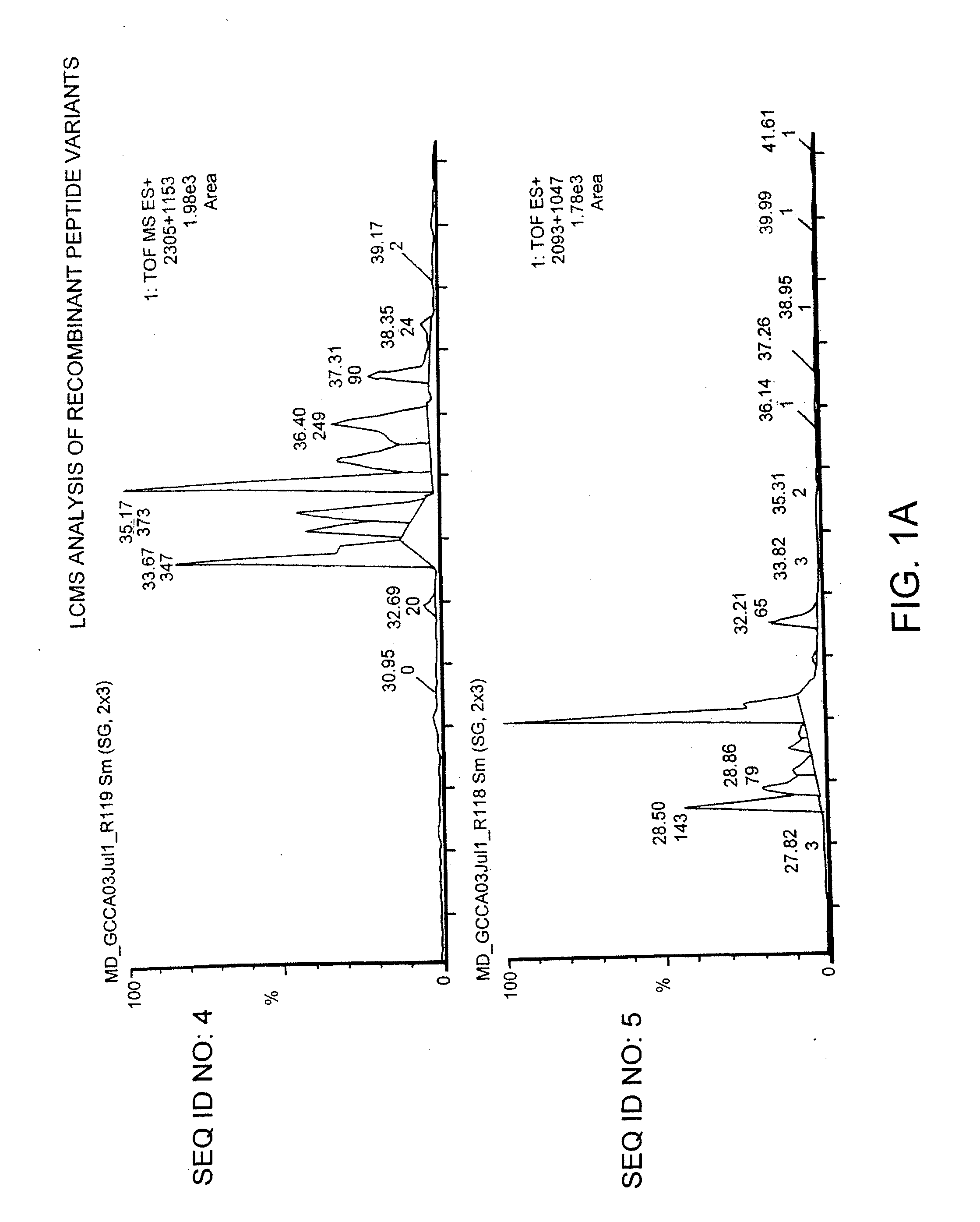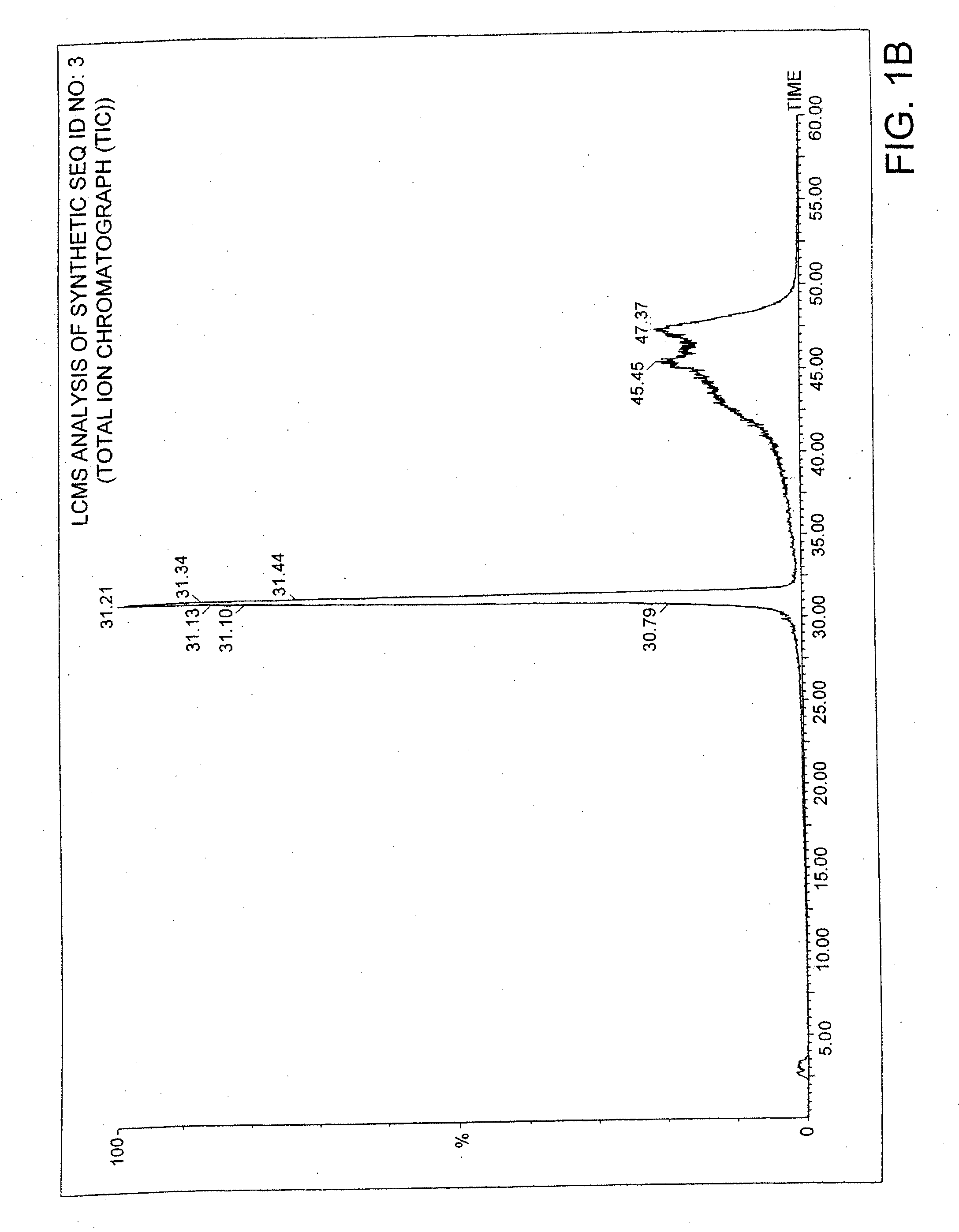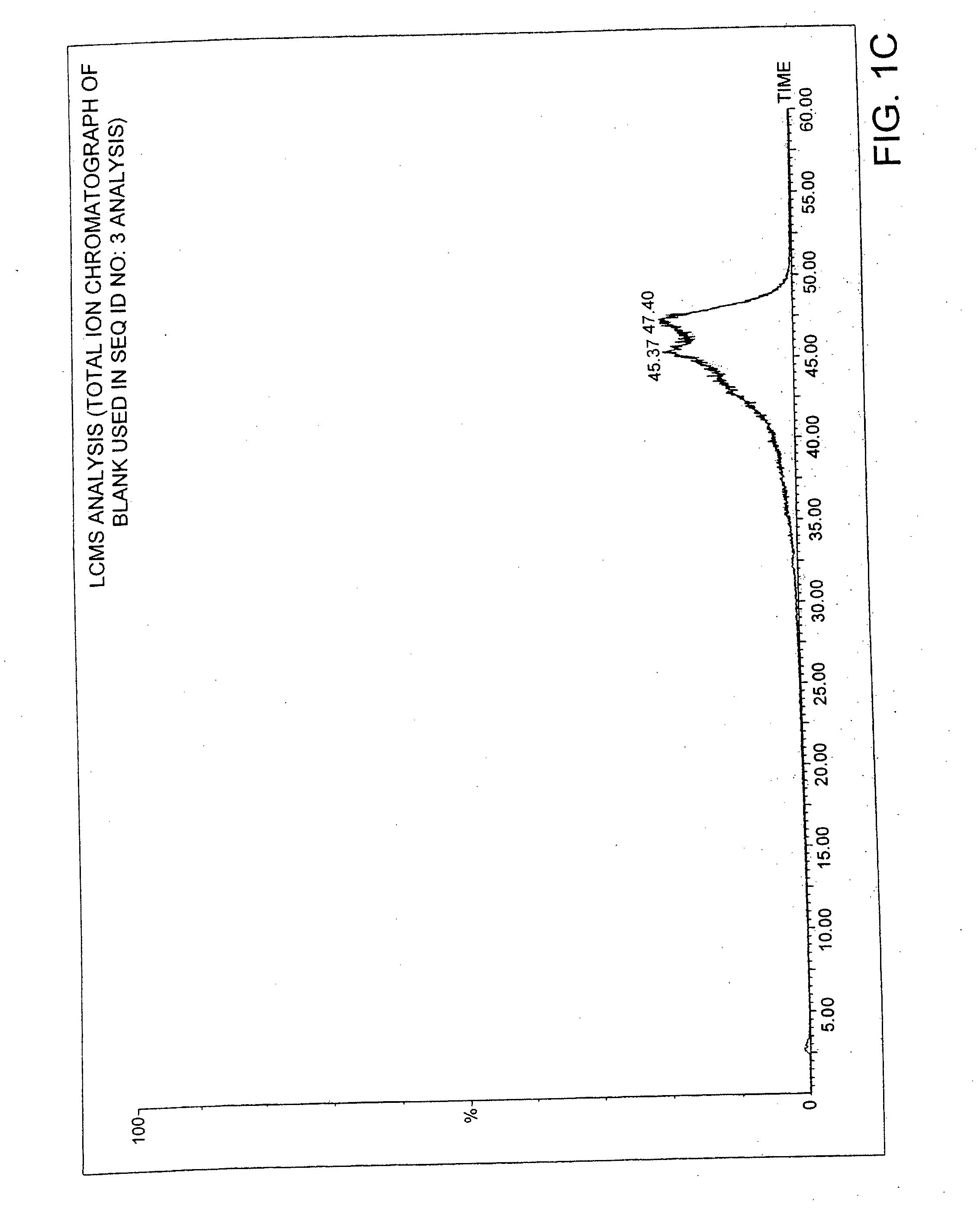Methods and Compositions for the Treatment of Gastrointestinal Disorders
a technology for gastrointestinal disorders and compositions, applied in the field of methods and compositions for the treatment of various disorders, can solve the problems of tremendous unmet medical needs, patients with ibs, and report a reduced quality of life, and achieve the effects of increasing or decreasing activity, improving functionality, and increasing or decreasing the ability of peptides
- Summary
- Abstract
- Description
- Claims
- Application Information
AI Technical Summary
Benefits of technology
Problems solved by technology
Method used
Image
Examples
example 1
Preparation of Variant ST Peptides and Wild-Type ST Peptide 1a: Preparation of Recombinant Variant ST Peptides and Wild-Type ST Peptide
[0121]A variant ST peptide, referred to as MD-915, was reproduced recombinantly and tested in an animal model. MD-915 has the sequence: Asn Ser Ser Asn Tyr Cys Cys Glu Tyr Cys Cys Asn Pro Ala Cys Thr Gly Cys Tyr (SEQ ID NO:28). A peptide having the sequence of the wild-type ST peptide was also created (MM-416776).
[0122]MD-915 and MM-416776 peptides were produced as preproproteins using vectors produced as follows. A sequence encoding a heat-stable enterotoxin pre-pro sequence was amplified from pGK51 / pGSK51 (ATCC 67728) using oligonucleotide M03514 (5′ CACACCATATGAAGAAATCAATATTATTTATTTTTCTTTCTG 3′ (SEG ID NO:60)) and oligonucleotide M03515 (5′CACACCTCGAGTTAGGTCTCCATGCTTTCAGGACCACTTTTATTAC 3′ (SEQ ID NO: 61)). The amplification product fragment was digested with NdeI / XhoI and ligated to the T7 expression vector, pET26b(+) (Novagen) digested with NdeI / ...
example 2
Activation of the Intestinal GC-C Receptor by a Variant ST Peptide and ST Peptide
[0129]The ability of MD-915, MM-416776, and MD-1100 to activate the intestinal GC-C receptor was assessed in an assay employing the T84 human colon carcinoma cell line (American Type Culture Collection (Bethesda, Md.). For the assays cells were grown to confluency in 24-well culture plates with a 1:1 mixture of Ham's F12 medium and Dulbecco's modified Eagle's medium (DMEM), supplemented with 5% fetal calf serum and were used at between passages 54 and 60.
[0130]Briefly, monolayers of T84 cells in 24-well plates were washed twice with 1 ml / well DMEM, then incubated at 37° C. for 10 min with 0.45 ml DMEM containing 1 mM isobutylmethylxanthine (IBMX), a cyclic nucleotide phosphodiesterase inhibitor. Test peptides (50 μl) were then added and incubated for 30 minutes at 37° C. The media was aspirated and the reaction was then terminated by the addition of ice cold 0.5 ml of 0.1N HCl. The samples were held on ...
example 3
MD-915 and MM-416776 Increase Intestinal Transit in Mice
[0132]In order to determine whether the peptides increase the rate of gastrointestinal transit, the peptides and controls were tested using a murine gastrointestinal transit (GIT) assay (Moon et al. Infection and Immunity 25:127, 1979). In this assay, charcoal, which can be readily visualized in the gastrointestinal tract is administered to mice after the administration of a test compound. The distance traveled by the charcoal is measured and expressed as a percentage of the total length of the colon.
[0133]Mice were fasted with free access to water for 12 to 16 hours before the treatment with peptide or control buffer. The peptides were orally administered at 1 μg / kg-1 mg / kg of peptide in buffer (20 mM Tris pH 7.5) 7 minutes before being given an oral dose of 5% Activated Carbon (Aldrich 242276-250G). Control mice were administered buffer only before being given a dose of Activated Carbon. After 15 minutes, the mice were sacrif...
PUM
| Property | Measurement | Unit |
|---|---|---|
| pH | aaaaa | aaaaa |
| run time | aaaaa | aaaaa |
| flow rate | aaaaa | aaaaa |
Abstract
Description
Claims
Application Information
 Login to View More
Login to View More - R&D
- Intellectual Property
- Life Sciences
- Materials
- Tech Scout
- Unparalleled Data Quality
- Higher Quality Content
- 60% Fewer Hallucinations
Browse by: Latest US Patents, China's latest patents, Technical Efficacy Thesaurus, Application Domain, Technology Topic, Popular Technical Reports.
© 2025 PatSnap. All rights reserved.Legal|Privacy policy|Modern Slavery Act Transparency Statement|Sitemap|About US| Contact US: help@patsnap.com



